Table of Contents
Types of welding
There are following 7 main types of welding processes
- Arc welding
- Resistance welding
- Gas welding
- Laser welding
- Plasma welding
- Electron beam welding
- Friction welding
Arc welding:
Arc welding is a popular welding technique that has been used for many years to join metals together. It involves using an electric arc to melt and fuse metal together, creating a strong and durable bond. This welding method is widely used in the manufacturing industry, as well as for repair and maintenance work.
History of Arc Welding
The history of arc welding can be traced back to the late 1800s when electric generators became widely available. In 1881, a French engineer named Auguste de Meritens developed the first arc welding method, which used a carbon electrode to create an arc between two metal pieces. However, this method was not widely used due to the limitations of the available technology at the time.
In 1905, another French engineer named A.P. Strohmenger developed an arc welding method that used a metallic electrode. This method was more successful than de Meritens’ method and was soon adopted by the manufacturing industry.
Types of Arc Welding
There are several types of arc welding, including Shielded Metal Arc Welding (SMAW), Gas Tungsten Arc Welding (GTAW), Gas Metal Arc Welding (GMAW), and Flux-Cored Arc Welding (FCAW). Each method has its own unique advantages and disadvantages, and the choice of method depends on the type of metal being welded and the application.
Shielded Metal Arc Welding (SMAW)
Shielded Metal Arc Welding (SMAW), also known as stick welding, is the most common type of arc welding. It uses a stick-shaped electrode that is coated in flux to create an arc between the electrode and the metal being welded. The flux creates a gas shield around the weld, protecting it from atmospheric contamination.
Gas Tungsten Arc Welding (GTAW)
Gas Tungsten Arc Welding (GTAW), also known as Tungsten Inert Gas (TIG) welding, is a precise welding method that uses a non-consumable tungsten electrode to create an arc between the electrode and the metal being welded. A shielding gas is used to protect the weld from atmospheric contamination.
Gas Metal Arc Welding (GMAW)
Gas Metal Arc Welding (GMAW), also known as Metal Inert Gas (MIG) welding, is a fast and efficient welding method that uses a consumable electrode wire to create an arc between the electrode and the metal being welded. A shielding gas is used to protect the weld from atmospheric contamination.
Flux-Cored Arc Welding (FCAW)
Flux-Cored Arc Welding (FCAW) is a welding method that uses a tubular wire electrode filled with flux to create an arc between the electrode and the metal being welded. The flux creates a gas shield around the weld, protecting it from atmospheric contamination.
Benefits and Drawbacks of Arc Welding
Arc welding has a number of benefits, including its ability to weld a wide range of metals, its versatility, and its relatively low cost. It is also a fast and efficient welding method, making it ideal for manufacturing applications. However, there are also some drawbacks to arc welding, including the need for a power source and the potential for atmospheric contamination.
Safety Precautions for Arc Welding
Arc welding can be dangerous if proper safety precautions are not taken. Welders should wear protective clothing, including gloves, a welding helmet, and a flame-resistant jacket. They should also work in a well-ventilated area to prevent the buildup of harmful fumes. Additionally, the welding equipment should be inspected regularly to ensure that it is in good working condition.

Resistance Welding:
Resistance welding is a popular welding technique that involves the use of electrical resistance to join two or more metals. This welding method is widely used in the manufacturing industry, and it offers several benefits such as high speed, low cost, and high-quality welds. In this article, we will discuss resistance welding in detail, including its types, advantages, disadvantages, and applications.
What is Resistance Welding?
Resistance welding is a welding technique that uses an electric current to create heat and melt the metals being joined. The heat is generated by the resistance of the metal to the electric current passing through it. The heat generated is then used to melt and fuse the metals, creating a strong and durable weld.
Resistance welding is commonly used to join metal sheets, wires, and other components in the automotive, aerospace, electronics, and other industries. There are several types of resistance welding techniques, including spot welding, seam welding, projection welding, and flash welding.
Types of Resistance Welding
1. Spot Welding: Spot welding is the most common type of resistance welding. It involves the use of two copper electrodes that apply pressure and an electric current to the metal sheets being joined. The heat generated melts the metal, and the pressure from the electrodes creates a strong and durable weld.
2. Seam Welding: Seam welding is similar to spot welding, but instead of using two electrodes, it uses a wheel-shaped electrode that rolls along the metal sheets being joined. The heat generated by the electric current melts the metal, and the pressure from the electrode creates a continuous weld along the seam.
3. Projection Welding: Projection welding is used to join components with small projections or bumps on their surface. The projections create a localized resistance, which generates heat when an electric current is passed through them. The heat melts the metal, and the pressure from the electrode creates a strong and durable weld.
4. Flash Welding: Flash welding involves the use of two metal components that are brought into contact with each other and then subjected to an electric current. The heat generated by the current melts the metal, and the pressure from the electrodes creates a strong and durable weld.
Advantages of Resistance Welding
1. High Speed: Resistance welding is a high-speed welding technique that can produce welds in a matter of seconds. This makes it ideal for mass-production applications.
2. Low Cost: Resistance welding is a low-cost welding technique that requires minimal equipment and maintenance. It is also an energy-efficient process, which reduces operating costs.
3. High-Quality Welds: Resistance welding produces high-quality welds that are strong and durable. The welds are also free from defects such as porosity and inclusions.
4. Versatile: Resistance welding can be used to join a wide range of metals and alloys, including stainless steel, aluminum, copper, and brass.
Disadvantages of Resistance Welding
1. Limited Thickness: Resistance welding is unsuitable for joining materials that are too thick. The thickness of the metal sheets being joined is limited by the amount of heat that can be generated by the electric current.
2. Equipment Setup: Resistance welding requires specialized equipment and setup, which can be costly and time-consuming.
3. Surface Preparation: The metal surfaces being joined must be clean and free from any contaminants such as rust or oil. Otherwise, the quality of the weld may be compromised.
Applications of Resistance Welding
Resistance welding is used in a wide range of applications, including:
1. Automotive Industry: Resistance welding is commonly used in the automotive industry to join body panels, exhaust systems, and other components.
2. Aerospace Industry: Resistance welding is used in the aerospace industry to join aluminum and titanium components.
3. Electronics Industry: Resistance welding is used in the electronics industry to join wires, connectors, and other components.
Gas welding:
Gas welding is a popular welding process that uses a flame produced by burning a mixture of gases to melt and join metal pieces. It is an effective welding technique that has been used in various industries for decades. In this article, we will delve deeper into gas welding and explore its history, benefits, and how it works.
History of Gas Welding
Gas welding was first introduced in the early 1900s and quickly gained popularity due to its versatility and effectiveness. The process involves heating metal to its melting point using a flame produced by burning a mixture of gases, typically oxygen, and acetylene. The heat produced by the flame melts the metal pieces, and a filler material is added to join them together.
In the early days of gas welding, the process was considered dangerous due to the high temperatures involved, and the lack of safety equipment. However, with the development of safer equipment and improved techniques, gas welding became a reliable and safe welding process.
Benefits of Gas Welding
There are many benefits of gas welding that make it a popular choice in various industries. Some of these benefits include:
1. Versatility: Gas welding can be used to weld a wide range of metals, including steel, aluminum, brass, and copper. It is a versatile welding process that can be used in various applications, including automotive, construction, and manufacturing.
2. Portability: Gas welding equipment is portable and can be used in different locations, making it ideal for on-site repairs and welding tasks.
3. Cost-effective: Gas welding is a cost-effective welding process that requires minimal equipment and is relatively easy to learn.
4. Strong welds: Gas welding produces strong welds that are durable and reliable.
How Gas Welding Works?
Gas welding works by heating the metal pieces to be welded using a flame produced by burning a mixture of gases. The gases used for gas welding are typically oxygen and acetylene. The oxygen is used to support combustion, while acetylene provides the heat needed to melt the metal.
To start the gas welding process, the welding torch is ignited, and the gases are adjusted to the desired flow rate. The torch flame is directed at the metal pieces to be welded, heating them to their melting point. As the metal pieces melt, a filler material is added to join them together.
Gas welding requires skill and precision to produce strong, reliable welds. Welders must adjust the flow rate of the gasses and control the temperature of the flame to ensure that the metal pieces are heated evenly and melted to the correct temperature.
Laser welding
Laser welding is a manufacturing process that uses a high-powered laser to melt and join materials together. It is a popular method in the aerospace, automotive, medical device, and electronics industries due to its precision, speed, and versatility.
What is Laser Welding?
Laser welding uses a concentrated beam of light energy to melt and fuse two or more materials together. The laser beam heats the material until it melts and forms a molten pool. As the pool cools, the materials bond together and solidify. The process is very precise, with the laser beam able to be focused to a small spot size, which allows for intricate and detailed welds.
Advantages of Laser Welding
There are several advantages to using laser welding over traditional welding methods. Here are a few:
1. Precision: The laser beam can be focused to a small spot size, allowing for precise and intricate welds.
2. Speed: Laser welding is a high-speed process, which can result in faster production times.
3. Quality: Laser welding produces a high-quality weld that is strong, consistent, and free of defects.
4. Versatility: Laser welding can be used to weld a wide range of materials, including metals, plastics, ceramics, and composites.
5. Reduced Heat Input: Since laser welding is a high-energy process, it can generate much heat. However, the heat input is much lower than traditional welding methods, which reduces the chances of warping, cracking, or other heat-related issues.
Applications of Laser Welding
Laser welding is used in a wide range of industries and applications, including:
1. Aerospace: Laser welding is used to join components in aircraft and spacecraft, such as engine parts, fuel tanks, and structural components.
2. Automotive: Laser welding is used in the manufacturing of vehicles, including body panels, exhaust systems, and engine components.
3. Medical Device: Laser welding is used to create medical devices, such as pacemakers, surgical instruments, and dental implants.
4. Electronics: Laser welding is used in the production of electronic devices, including microchips, circuit boards, and sensors.
5. Jewelry: Laser welding is used in the manufacturing of jewelry, including fine metalwork, custom designs, and repairs.
Plasma welding
Plasma welding is a type of welding process that utilizes a high-velocity jet of plasma to melt and join two pieces of metal together. This welding technique has gained immense popularity recently due to its numerous advantages over other welding methods.
What is Plasma Welding?
Plasma welding is a high-precision welding technique that uses a plasma arc to melt and join two pieces of metal together. The plasma arc is created by ionizing a gas such as argon, helium, or a mixture of the two, with an electric arc. The ionized gas forms a plasma jet, which is directed toward the welding area to melt the metal.
How does Plasma Welding work?
The plasma welding process begins with the setup of the welding equipment. The welding machine is set to generate a plasma arc by passing an electric current through a tungsten electrode. The electrode is then inserted into a nozzle, which is used to direct the plasma jet toward the welding area. The gas used for plasma welding is typically argon or a mixture of argon and hydrogen.
Once the plasma arc is generated, it ionizes the gas to form a plasma jet. The plasma jet is directed towards the welding area, where it melts the metal. The heat generated by the plasma jet is controlled by adjusting the voltage and current of the welding machine. This allows the operator to precisely control the heat input into the welding area, resulting in a high-quality weld.
Advantages of Plasma Welding
1. High-quality welds: Plasma welding produces high-quality welds with excellent penetration and minimal distortion.
2. Precision: Plasma welding is a high-precision welding technique that can be used to weld very small and delicate parts.
3. Speed: Plasma welding is a fast welding technique that can join metals quickly.
4. Versatility: Plasma welding can be used to weld a wide range of metals, including aluminum, copper, and stainless steel.
5. Reduced heat input: Plasma welding generates less heat than other welding techniques, reducing the risk of warping and distortion.
Disadvantages of Plasma Welding
1. Operator skill: Plasma welding requires a highly skilled operator to ensure the quality of the weld.
2. Equipment costs: Plasma welding equipment can be expensive, making it less accessible to small-scale operations.
3. Limited thickness: Plasma welding is best suited for thin to medium-thickness metals and may not be suitable for thicker metals.
Applications of Plasma Welding
Plasma welding is used in a wide range of industries, including aerospace, automotive, and medical. Its high precision and versatility make it an ideal welding technique for joining thin and delicate parts. Some common applications of plasma welding include:
1. Welding of aerospace components such as turbine blades, engine components, and heat exchangers.
2. Welding of medical devices such as surgical instruments and implants.
3. Welding of automotive components such as exhaust systems and fuel tanks.
Electron beam welding
What is Electron Beam Welding?
Electron beam welding (EBW) is a fusion welding process that uses a beam of high-velocity electrons to melt and join two or more metal parts together. The process involves the use of an electron gun that generates a beam of high-energy electrons, which are then directed toward the welding area through a series of magnetic lenses. As the electrons strike the metal surface, they transfer their kinetic energy, causing the metal to melt and fuse together.
The electron beam welding process is carried out in a vacuum environment to prevent contamination of the welding area by oxygen and other atmospheric gases. The vacuum environment also helps to reduce the scattering of the electrons and provides a clear path for the beam to travel through.
Advantages of Electron Beam Welding
Electron beam welding has several advantages over other welding techniques. Following are some of the key benefits of this process:
1. High Precision: Electron beam welding is highly precise and can be used to weld very small and delicate parts. The electron beam can be focused to a very small spot size, typically ranging from 0.1 to 0.5mm, allowing for very precise control over the welding process.
2. High Welding Speed: Electron beam welding is a very fast process, with welding speeds ranging from 5 to 50 times faster than traditional welding techniques. This makes it ideal for high-volume production environments where speed is essential.
3. Low Heat Input: Electron beam welding generates very little heat, which means that there is minimal distortion or warping of the welded parts. This makes it ideal for welding thin materials and delicate components.
4. Deep Weld Penetration: Electron beam welding can achieve deep weld penetration, which means that it can join thick materials with ease. This makes it ideal for welding structural components and heavy-duty machinery.
5. Reduced Post-Weld Finishing: Because electron beam welding generates very little heat, there is typically less post-weld finishing required. This can save time and reduce the overall cost of the welding process.
Applications of Electron Beam Welding
Electron beam welding has a wide range of industrial applications. Here are some of the key areas where this welding technique is commonly used:
1. Aerospace: Electron beam welding is widely used in the aerospace industry for the welding of engine components, fuel tanks, and other critical parts. The high precision and deep weld penetration of electron beam welding make it ideal for aerospace applications.
2. Medical: Electron beam welding is used in the medical industry for the welding of surgical instruments and medical implants. The low heat input and precise control of the welding process make it ideal for delicate medical applications.
3. Automotive: Electron beam welding is used in the automotive industry for the welding of transmission gears, drive shafts, and other critical components. The high speed and low heat input of electron beam welding makes it ideal for high-volume production environments.
4. Energy: Electron beam welding is used in the energy industry for the welding of nuclear components, turbine blades, and other critical parts. The deep weld penetration and precise control of the welding process make it ideal for high-stress and high-temperature applications.
Friction welding
Friction welding is a solid-state joining process that is used to join two similar or dissimilar materials. This process involves the application of heat and pressure to the surfaces of the two materials to be joined, causing them to melt and fuse together.
Friction welding is commonly used in the aerospace, automotive, and construction industries, among others, due to its many advantages over other joining methods. In this article, we will explore what friction welding is, how it works, its advantages and disadvantages, and its applications.
What is Friction Welding?
Friction welding is a process in which two materials are joined together by applying heat and pressure to their surfaces. The materials to be joined are held together under pressure, and a high-speed rotational motion is applied to one of the materials, causing frictional heat to be generated at the interface.
This heat softens the material, causing it to deform and flow into the interstices of the other material. As the rotational motion is continued, the heat generated is transferred to the other material, causing it to soften and bond with the first material. Once the materials have been joined, the joint is allowed to cool and solidify, forming a strong and durable bond.
How Does Friction Welding Work?
Friction welding works by creating heat through the rubbing together of two materials. The process involves two primary stages: the rubbing stage and the forging stage. During the rubbing stage, the two materials are held together under pressure and a high-speed rotational motion is applied to one of the materials.
This motion generates heat at the interface of the two materials, causing them to soften and deform. As the rotation continues, the heat generated is transferred to the other material, causing it to soften and flow into the interstices of the first material.
Once the rubbing stage is complete, the forging stage begins. During this stage, the rotational motion is stopped, and a high-pressure force is applied to the materials to be joined, causing them to be pressed together and form a solid bond. The joint is then allowed to cool and solidify, forming a strong and durable bond.
Advantages of Friction Welding
Friction welding offers a number of advantages over other joining methods, including:
1. Strong and durable bonds: Friction welding creates strong and durable bonds between materials, which can withstand high levels of stress and strain.
2. Reduced distortion: Friction welding produces less distortion in the materials being joined than other methods, making it ideal for joining complex shapes and thin materials.
3. Reduced heat input: Friction welding requires less heat input than other methods, which can reduce the risk of distortion and other forms of damage to the materials being joined.
4. Environmentally friendly: Friction welding produces minimal waste and does not require the use of consumable materials, making it an environmentally friendly joining method.
Disadvantages of Friction Welding
Despite its many advantages, friction welding also has some disadvantages, including:
1. High initial cost: Friction welding equipment can be expensive, making it less accessible to smaller businesses.
2. Limited joint size: Friction welding is limited to joining relatively small pieces of material, making it less suitable for larger projects.
3. Limited material compatibility: Friction welding is most effective when joining similar materials, limiting its usefulness in situations where dissimilar materials must be joined.
Applications of Friction Welding
Friction welding has a wide range of applications in various industries, including:
1. Aerospace: Friction welding is commonly used in the aerospace industry to join parts made from high-strength metals and alloys.
2. Automotive: Friction welding is used in the automotive industry to join parts made from various materials, including steel, aluminum, and magnesium.
3. Construction: Friction welding is used in the construction industry to join parts



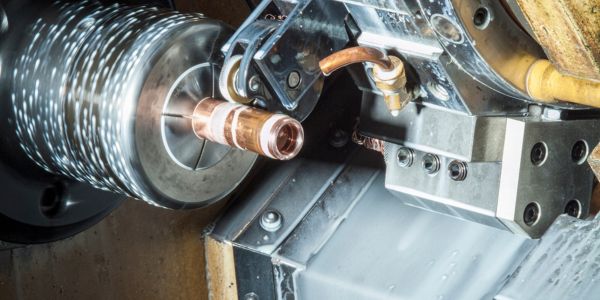

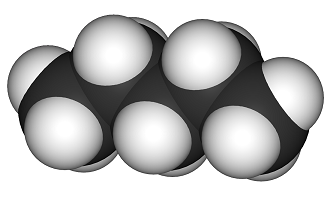

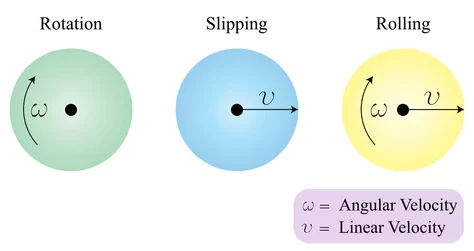

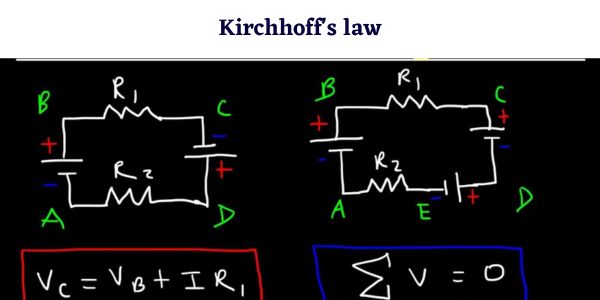

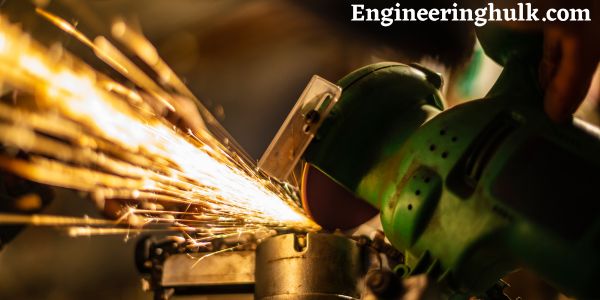


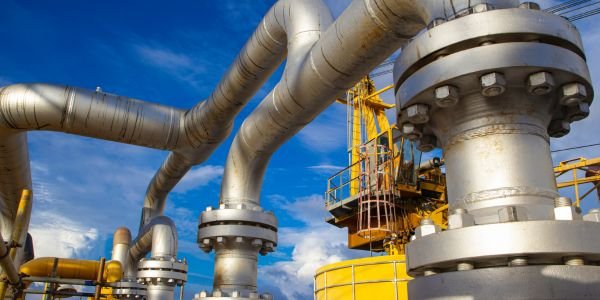

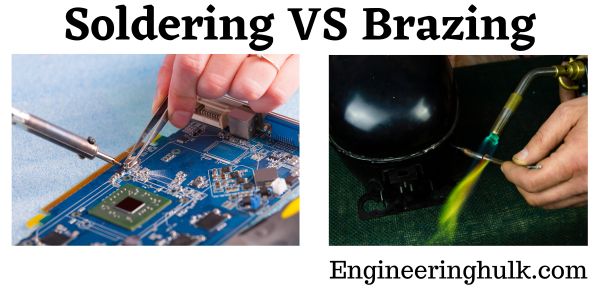










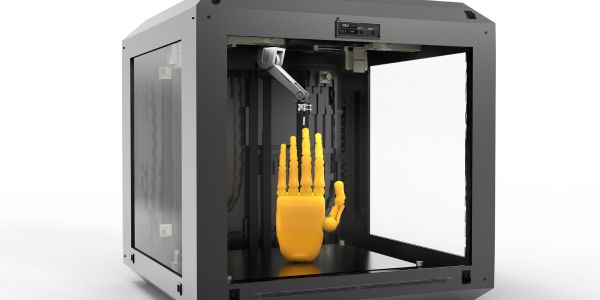



Comments on “Types of Welding – Advantages, disadvantages & Applications”
Comments are closed.